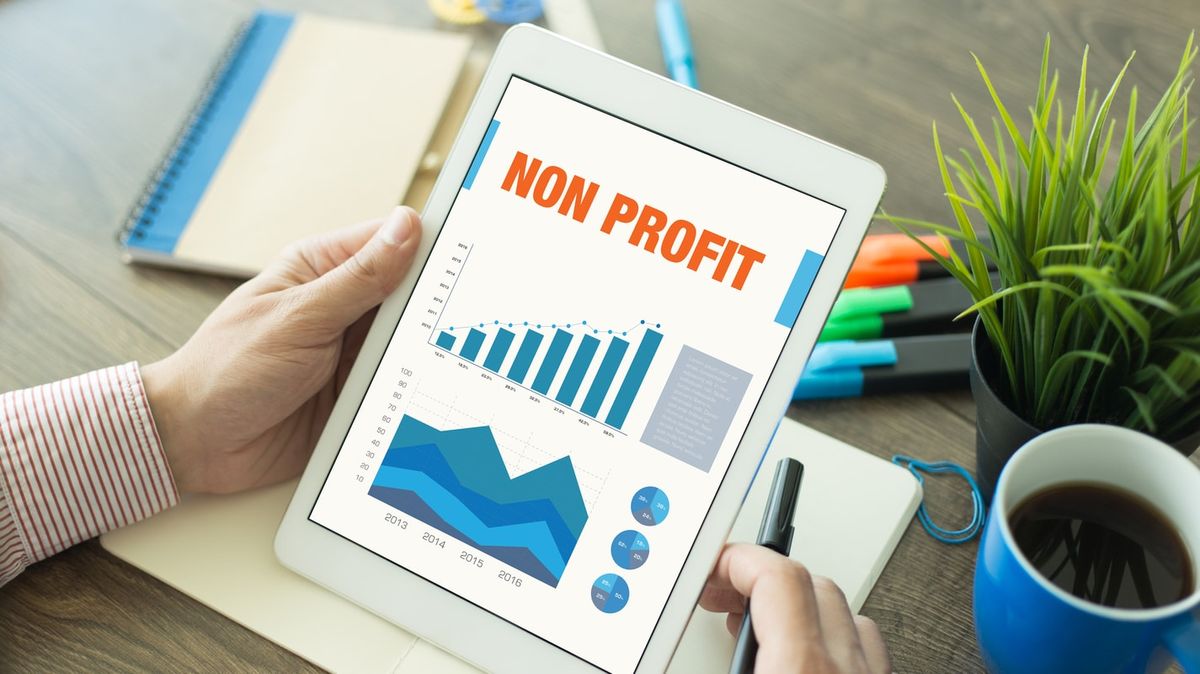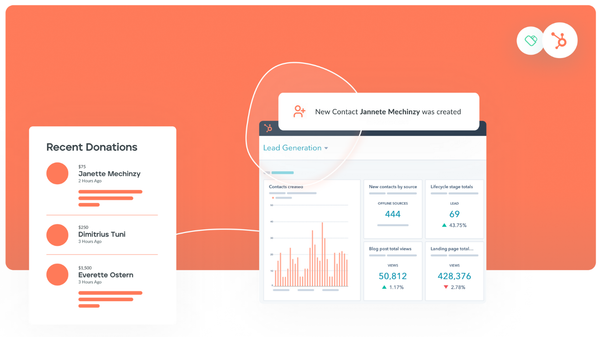4 Essential Considerations for New 501(c)(3) Nonprofits

This guest post was contributed by File990.
When you’re starting out as a new 501(c)(3) nonprofit, there are a lot of moving parts to consider as you get all set up, which can quickly become overwhelming. That’s why it’s important to focus on how best to distribute your funds and take advantage of the resources available to you that will make your administrative tasks easier. After all, you want to spend as much time focusing on your mission as possible.
As a nonprofit organization, your donation page is a primary method of receiving revenue, but there’s more to your financials than that. Taxes are a topic that no one wants to spend much time on, but it’s essential to your organization that you do your research.
If you’re a 501(c)(1), or any variation of that up to a 501(c)(29), you qualify to file for tax-exempt status. Then, you’ll maintain this status by filing an annual Form 990.
Why do you need to file a Form 990?
If you don’t file this form, you could lose your tax-exempt status. This status saves your nonprofit a lot of money that would’ve otherwise been spent on federal taxes. Think about it: The money you’re not spending on taxes is better allocated toward your organization’s mission. Save money by maintaining a tax-exempt status to increase your budget and focus on fundraising.
But tax forms, including your Form 990, can appear overwhelming! Using the right filing software will help ensure the information you provide on your form is complete and that you file on time.
In this article, we’ll discuss essential considerations you should have as a new 501(c)(3) nonprofit, including:
- The type of tax form you should file
- When you need to file
- The filing software features you should look for
- Keeping your data organized
Are you ready to take a closer look at what you should know as a new nonprofit? Let’s get started!
1. Determine the type of form you need to file.
There are different types of the Form 990 that you should be able to differentiate between. The type of form you need to file depends on your gross receipts. The different options for the types of 990 forms filed by nonprofits include the forms 990-N, 990-EZ, 990, and 990-PF.
Be sure to select the correct one by considering the following criteria:
- 990-N (postcard). The 990-N is an 8-question online form reserved for small organizations. Are you wondering if your nonprofit can file a 990 postcard? You’ll file this form if your gross receipts are less than $50,000 throughout your nonprofit’s financial period.
- 990-EZ (4-page form). You’ll file this Form 990 if your gross receipts are less than $200,000 or if you have less than $500,000 in total assets. If you’re looking for more information about Form 990EZ, check out File990’s guide on the subject.
- 990 (12-page form). You’ll file this Form 990 if your gross receipts are above $200,000 during the financial year or if you have above $500,000 in assets.
- 990-PF. This 990 form is for private foundations, who will fill it out regardless of financial status. These forms ask private organizations to fill out information about their assets, financial activities, trustees, officers, and the grants awarded during their last financial period.
It’s important to determine which form you need to file and keep the differences in mind. Filing the correct form will make it easier on your process and help avoid any headaches down the line if the form is rejected or inaccurate. However, any nonprofit can fill out the standard Form 990. The postcard and EZ forms are simply easier options that you can qualify for if you’re a smaller organization.
2. Determine when you need to file.
Your timeline is also important as a new 501(c)(3) organization, as you might not be sure when you’re supposed to file your 990 form. Missing a deadline comes with repercussions, which we’ll explore below.
Depending on your fiscal year, your organization will have a set period of time during which you’ll be able to file your taxes. You will fall into one of these two deadline categories:
- You will file your Form 990 by May 15 if your nonprofit follows the calendar tax year.
- You will file your Form 990 by the 15th day of the 5th month after the month that concludes your fiscal tax year.
Though this provides a lot of time for your organization to file your form, you might end up forgetting to file, which can lead to some major repercussions.
So, what are the repercussions if you forget to file?
- For nonprofits with gross receipts less than $100,000: There will be a penalty of $20 per day for every day you're late, with a maximum penalty of $10,000 or 5% of your gross receipts.
- For nonprofits with gross receipts higher than $100,000: The penalty is $100 per day with a maximum of $50,000.
If you fail to file for more than three years, your organization will lose its tax-exempt status and have to reapply and pay filing fees.
This is why having the right tax software is so important. The best e-filer software will send a reminder after your first filing to make sure you get the correct one submitted on time. If you know you’ll be late filing, however, you can file a Form 8868 to extend your filing deadline for another 6 months.
3. Look for specific software features.
Now that you know when you should file, it’s time to take a look at the features of e-filing software that can streamline your entire process. If you look for certain features like user experience and affordability, you’ll be more likely to have a smooth experience and get your accurate forms in on time.
Here are the features you should look for in your filing software:
-
User experience. Your Form 990 software should ask a series of questions and fill out the form based on your responses to those questions. The software should also tap into the IRS database to autofill available information on the Form 990, offering an easy user experience.
-
Affordability. Just like when pricing your fundraising software, the filing software you’re considering should offer straightforward pricing so you know exactly what you'll pay before you make the investment. You can even factor it into your annual budget.
-
Customer service. It’s important to have the contact information for the host company of your software solution readily available if you have any software-related questions. There should also be a network of accountants who can answer your questions about tax information.
Just like there are tools you need as part of your nonprofit’s fundraising strategy, you should look for these specific features for filing software. When it comes to fundraising and taxes, you want to spend as much time as you can on the former and less time on the latter, if possible. Without these features, your tax filing process may become convoluted and the necessary assistance unavailable.
If you’re looking for a simple solution to all of this, File990 offers Form 990 software that allows you to enter your organization's EIN, which will then pull information from the IRS database and ask a series of questions to help you fill out the rest of the form. You’ll also be able to track failed returns and get instant verification of accepted returns.
4. Keep your data organized.
Just as you would with your nonprofit's general fundraising strategy, it’s essential that you keep your data organized for tax purposes.
Some of the information required on your Form 990 includes:
- Legal name
- Tax year
- Employer notification number (EIN)
- Gross receipts
- Website
After filling out your Form 990, be sure you check your work by cross-checking the metrics recorded in your nonprofit’s CRM. This is because if your Form 990 doesn’t comply with the set regulations, your form will be rejected and you’ll have to resubmit it.
You should also be sure not to include any identifying or sensitive information because these forms are public record. This means anyone can access it, so ensure that only the necessary information is included on the form.
Keeping your data organized in your accounting software is another surefire way to make sure you have the information you need and when you need it. Stay on top of your taxes and make the process as easy as possible so you can focus on what matters most.
For more information on Form 990 software, check out this helpful guide.
There are many things to take into consideration as a new 501(c)(3) nonprofit. Of course, you want your fundraising strategy to be front-and-center, but it can be difficult to do this during tax season.
Invest in the right software that will remind you to file, make the actual process simpler, and save your hard-earned money in the long run. That way, you’ll be able to focus on what’s most important to you and your nonprofit: your mission.
Keep these essentials in mind as you embark on the beginning of your nonprofit's journey!
About the Author

David Ebner is a marketing executive, public speaker, and author who specializes in the effectiveness of storytelling in marketing. When he's not writing about nonprofit software, he enjoys volunteering at educational programs around his home.





